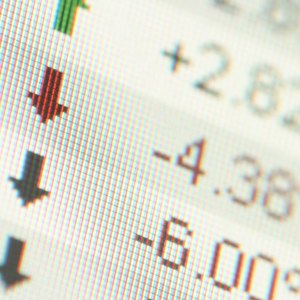
A holding period return of a common stock is the percentage return you earn over a certain period of time based on the change in stock price and the dividends you receive from the stock. You can calculate a stock’s expected holding period return using a forecast stock price and forecast dividend payments. A higher holding period return means you expect the investment will be more profitable. A negative holding period return means you expect the investment will lose money.
Visit any financial website that provides stock quote information. Type a company’s name or ticker symbol in the required text box, and click the button next to the text box to bring up the company’s stock information. A ticker symbol is one or more capital letters that are an abbreviation of the company’s name or something related to its business.
Find the stock’s current price, its one-year target estimate, or average target price, and the forward dividend rate. The one-year target estimate is the average stock price professional analysts have forecast that the stock will reach in one year. The forward dividend rate is the expected dividend payments over the next year. For example, assume a stock’s current price is $20, its one-year target estimate is $25 and its forward dividend rate is $1.
Subtract the current stock price from the one-year target estimate. Then add the forward dividend rate to your result. In this example, subtract $20 from $25 to get $5. Then add $1 and $5 to get $6.
Divide your result by the current price. In this example, divide $6 by $20 to get 0.3.
Multiply your result by 100 to calculate the expected holding period return for one year. A positive percentage represents a positive expected holding period return. A negative percentage represents a negative return. In this example, multiply 0.3 by 100 to get a 30 percent holding period return for one year.
Tips
You can use your own stock price estimate instead of the one-year price target to calculate the expected holding period return.
References
Tips
- You can use your own stock price estimate instead of the one-year price target to calculate the expected holding period return.

